How To Get Rid Of Aphids On Plants
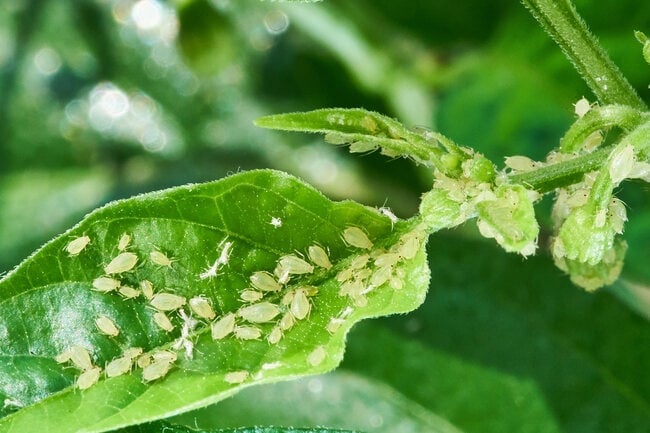
Finding aphids on plants can be alarming, especially when an infestation seems to happen overnight. Don’t panic: Aphids generally won’t kill mature plants and often only affect a portion of growth. However they can transmit diseases that may in turn destroy plants, which is why we recommend immediate treatment and removal. Rest assured, our simple suggestions here will help you win the war against these pesky pests.
What are aphids?
Aphids are small insects (about 1/16-1/8″ in size) with soft bodies. Most are green in color, but hues vary depending on the variety. More than 4,000 species have been identified around the world, with about 250 known as crop and ornamental pests. The most common is the green peach aphid which is found worldwide on more than 500 host plants, including potato, cherry, and rose.
Aphids are sap suckers, equipped with mouthparts that pierce the tender parts of a plant (stems, leaves, and roots) and draw out fluids. They have antennae, long legs, and cornicles (tubelike appendages located at the hind end that secrete a substance to ward off predators). They are mostly wingless, though some do have wings.
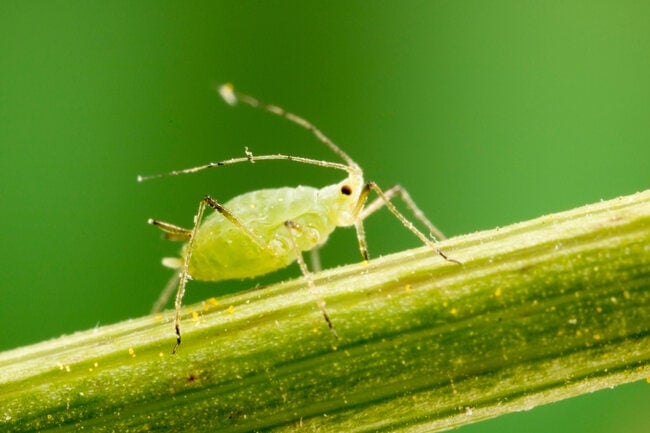
How To Control And Avoid Aphids
It may be as easy as wiping the bugs off the plant with your hand or a damp cloth. Or it may be a little more complicated if, say, an entire row of peas is covered with them. Knowing the life cycle of aphids can help immensely with how to control them or possibly avoid them entirely.
Life Cycle
Aphids have a complex method of reproduction, part of which accounts for the sheer number of insects that can infest a plant in a short period of time. In a single growing season, multiple generations may be born, all of which can then continue to reproduce.
If you think aphids come from eggs laid by a female, you would be partly correct. Most species overwinter as eggs (and in some climates as adults) on host plants or in plant debris. But to get to the egg stage for overwintering, we have to go back to how these insects live and grow during the growing season.
When the eggs hatch, what emerges are wingless females called “stem mothers.” These aphids don’t lay more eggs but instead give birth to live aphids, called nymphs, which look like tinier versions of an adult. Over the course of about a month, a single stem mother can have up to 100 nymphs. All of the nymphs, by the way, are female and can mature in a week in summer temperatures and start giving birth to more nymphs.
When the ever-expanding colony on a host plant begins to grow too crowded, females with wings will begin to emerge. Those winged females will then fly off to a new location and begin to colonize that host.
Lower temperatures and shortened days are a signal for aphids. That’s when they will give birth to not just females but also males, which develop wings and migrate to locations favorable for overwintering. The aphids mate and the females lay the eggs that will overwinter and emerge in spring as the stem mothers.
Prevention Techniques
Prevention is the first line of defense. First consider which plants are the most attractive to aphids. The three top families are: aster, conifer, and rose. The aster family includes more than 23,000 species, with plants such as aster, coneflower, daisy, sunflower and zinnia. Conifers have about 630 species, from cedar to fir to larch to pine to redwoods, yews and spruces. As for the rose family, there are 3,000 species that include everything from roses to strawberries, apples, almonds, blackberries, and more! Here are a few things that you will want to do:
- Remove plant debris in the fall to eliminate overwintering locations.
- Eliminate weeds, especially around seedlings to stop the potential transfer of aphids from one location to another.
- Knock the aphids off — by hand or using water sprayed from a regular garden hose. Most will not return to the plant.
- Do not use a nitrogen fertilizer during an aphid infestation as it can make the infestation worse.
- Use a lightweight fabric row cover to protect young plants.
- Use reflective silver mulch or mylar. Light reflected on the underside of leaves acts as a repellent. An added benefit is that the increase in light often means an increase in how much the plant will yield. In place of reflective mulch, disposable aluminum pie plates with a hole in the center can offer similar aid, as well as aluminum foil, matte side against the soil.
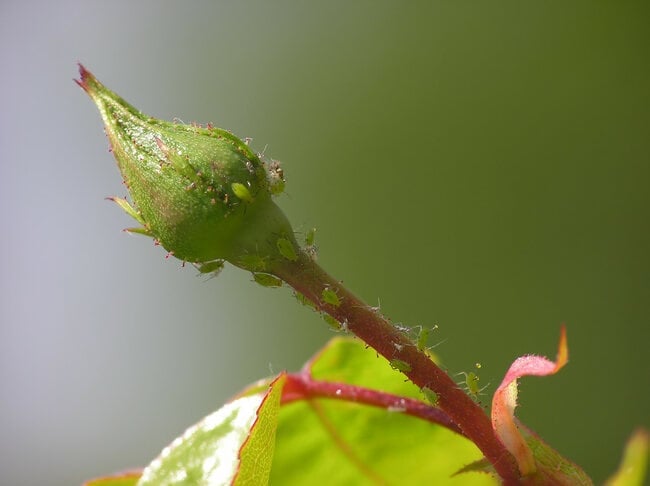
Signs To Watch For
Signs of an aphid infestation may manifest in a number of ways, long before you notice the tiny aphids that tend to hide on the underside of leaves and in less noticeable locations.
- White coating on leaves and stems: Aphids excrete a sugary water known as honeydew, which coats the leaves and stems of an infected plant. In great quantities, it may drip off the plant. A side effect of this honeydew is that it attracts sugar-loving ants. (Ants have been known to protect aphids, even going so far as to carry them from plant to plant and overwintering their aphids in their own nests!)
- Black sooty mold: Honeydew (mentioned above) also promotes growth of a fungi called sooty mold. This appears as black soot on affected leaves and can interfere in the plant’s photosynthesis.
- White casts: Aphids molt and leave behind white casts on leaves and stems.
- Leaf curl, leaf wilting, stunted shoot growth. On certain plants, abnormal plant growths called galls may also be present.
Plant Controls
Companion planting has long been used to ward off garden pests, including aphids. Here are some helpful suggestions:
- Marigolds: Strong scented flowers such as marigolds mask the smell of attractive host plants.
- Nasturtiums and okra: These are known as “trap” plants because they draw aphids towards them.
- Alliums: Chives and garlic are excellent repellents. (But please note that peas and beans dislike garlic and should not be planted nearby.)
- Dill, fennel, basil, rosemary and lavender also tend to repel aphids.
- Peppermint also works, but given that it is a mint and a perennial, be aware it can spread like wildfire and become a weedy pest.
Other Biological Controls
Sometimes, nature itself can provide relief from an aphid invasion. These are biological controls, some of which are commercially available. A number of insects prey on aphids, including ladybird beetles (ladybugs), lacewings, aphid midges, hover flies and parasitic wasps. There are also some fungi that can infect and kill. Some birds also eat aphids.
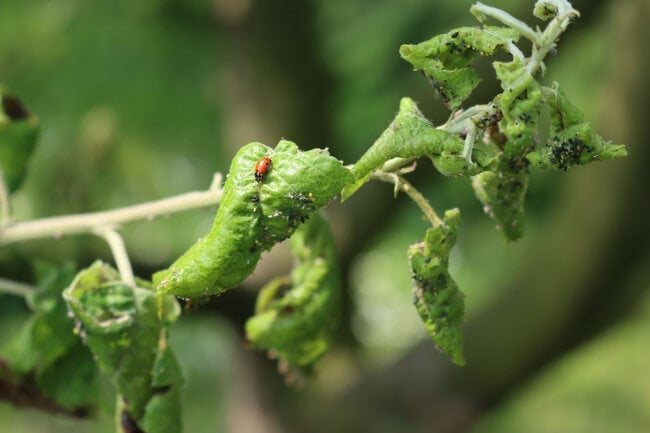
Parasitic wasps, for example, lay their eggs inside the aphid and the wasp larvae then eat the aphid from the inside while the outside of the aphid hardens, creating what is called a mummy. Inside the mummy, the larva develops, emerging as the adult wasp.
Other insects feed on aphids, such as the ladybird beetles and lacewings. Perhaps best known as aphid predators are the ladybirds, which are readily available for purchase. (Releasing these into a greenhouse setting and not outdoors is a recommended use.)
Observation is the best way to see if nature is helping control the aphid infestation. The presence of the mummy shells where the aphids are shows the wasps are active. The presence of ladybirds and lacewings on plants shows available predators.
Chemical Controls
Chemical controls are another method of management, but be aware there are potential problems with any chemical application, particularly harming beneficial garden insects, including aphid predators. Chemicals also can damage or kill plants, especially in warm weather when temperatures are high or when plants are in drought situations. In many situations, the solution is more harmful to the plant than the damage the aphids do.
Some chemical applications that may be useful include (follow all instructions for usage and application, including time of day, susceptible plants, food crop safety and vulnerable insects):
- Insecticidal soap
- Horticultural oil
- Pyrethrin
Note: Cats and fish are particularly sensitive to pyrethrin.
Disease transmission
Aphids transmit diseases when they cut into and feed off a plant. Aphids are sources of many mosaic viruses, including cucumber mosaic and potato mosaic.
The problem is that a plant can be infected even when the number of aphids is minute, which is usually long before there are signs of an infestation or the aphids are spotted by a visual inspection.
That particular fact makes prevention the best way to control aphids and the damage they can cause.
Join The Discussion
Do you have problems with aphids?
What is one piece of information you found useful about this article?
Share with your community here in the comments below!
Related Articles
10 Common Tomato Problems And How To Fix Them

Janine Pineo
Janine Pineo has been gardening all her life in Maine and writing about it for more than two decades. More of her writing can be found on her website, GardenMaine.com.



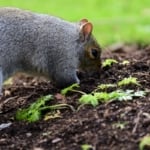
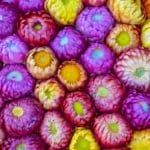
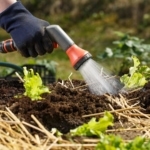
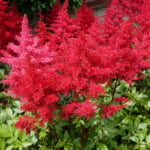
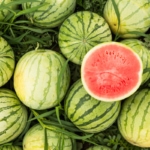

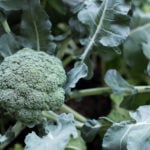
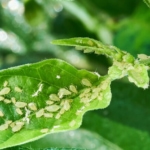
I ran into a situation this year with my spirea. They developed aphids for the first time and as I was pruning them I noticed orange bugs with no spots. I’m wondering if those orange bugs without spots were lady bugs? I felt terrible that I removed branches with them on it. I placed the branches in an open compost pile as I didn’t know what to do with them. I hope they managed to fly to other plants to feed on.
The directions on the spirea says to prune after blooming to encourage a 2nd rebloom, which I do for the pollinators. But am I risking lady bugs while doing this?
I want to review televisons